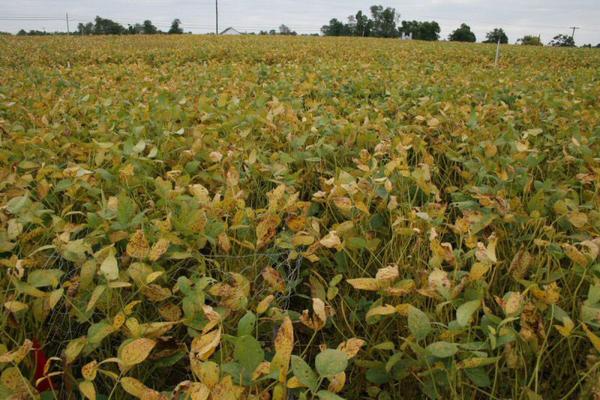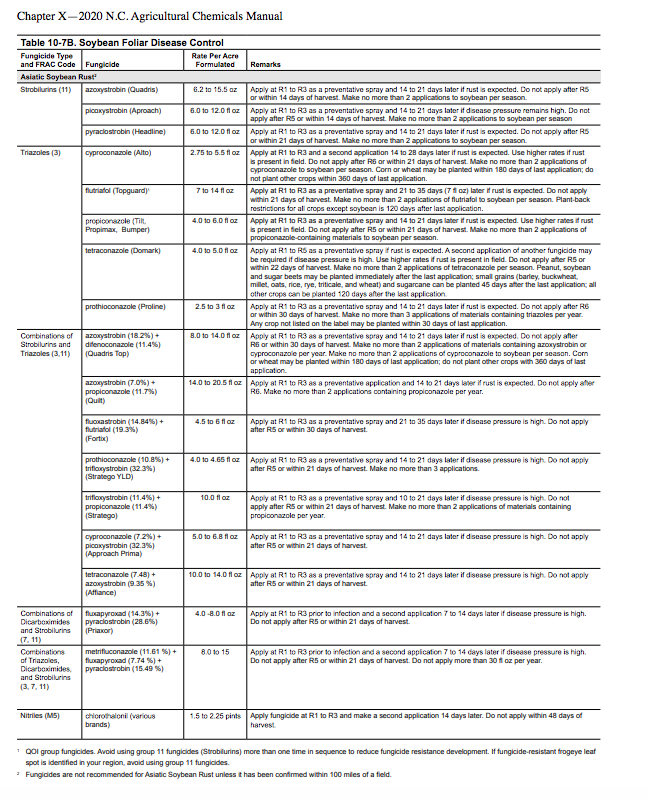Soybean Rust Confirmed in Eastern NC October 19, 2020
go.ncsu.edu/readext?744638
en Español / em Português
El inglés es el idioma de control de esta página. En la medida en que haya algún conflicto entre la traducción al inglés y la traducción, el inglés prevalece.
Al hacer clic en el enlace de traducción se activa un servicio de traducción gratuito para convertir la página al español. Al igual que con cualquier traducción por Internet, la conversión no es sensible al contexto y puede que no traduzca el texto en su significado original. NC State Extension no garantiza la exactitud del texto traducido. Por favor, tenga en cuenta que algunas aplicaciones y/o servicios pueden no funcionar como se espera cuando se traducen.
Português
Inglês é o idioma de controle desta página. Na medida que haja algum conflito entre o texto original em Inglês e a tradução, o Inglês prevalece.
Ao clicar no link de tradução, um serviço gratuito de tradução será ativado para converter a página para o Português. Como em qualquer tradução pela internet, a conversão não é sensivel ao contexto e pode não ocorrer a tradução para o significado orginal. O serviço de Extensão da Carolina do Norte (NC State Extension) não garante a exatidão do texto traduzido. Por favor, observe que algumas funções ou serviços podem não funcionar como esperado após a tradução.
English
English is the controlling language of this page. To the extent there is any conflict between the English text and the translation, English controls.
Clicking on the translation link activates a free translation service to convert the page to Spanish. As with any Internet translation, the conversion is not context-sensitive and may not translate the text to its original meaning. NC State Extension does not guarantee the accuracy of the translated text. Please note that some applications and/or services may not function as expected when translated.
Collapse ▲Soybean rust was found and confirmed on soybeans in Hyde County, NC. Soybean rust has the potential to cause significant yield loss when conditions are conducive for disease (12 hours of leaf wetness and temperatures between 60 and 82°F).
Although I do not expect a significant impact from this late-season epidemic, late-planted soybeans may be at risk. If you are concerned that soybean rust may affect your soybeans (between first bloom and R5), scout fields in an irregular pattern (e.g., zig-zag patterns). If you suspect soybean rust, please submit a sample to the Plant Disease and Insect Clinic for confirmation.
Spraying a fungicide may be beneficial to prevent infection of soybean rust on soybeans if soybean rust is confirmed on soybeans within 100 miles of your field, and the soybeans are between first bloom and stage R5 (early seed development).
For more information see the Soybean Rust Fact Sheet and find fungicide information from the NC Agricultural Chemicals Manual below.
This article can be accessed at the NC State Extension Soybean Portal.
For additional information, contact Perquimans Field Crops Extension Agent, Dylan Lilley at 252-426-5428.





